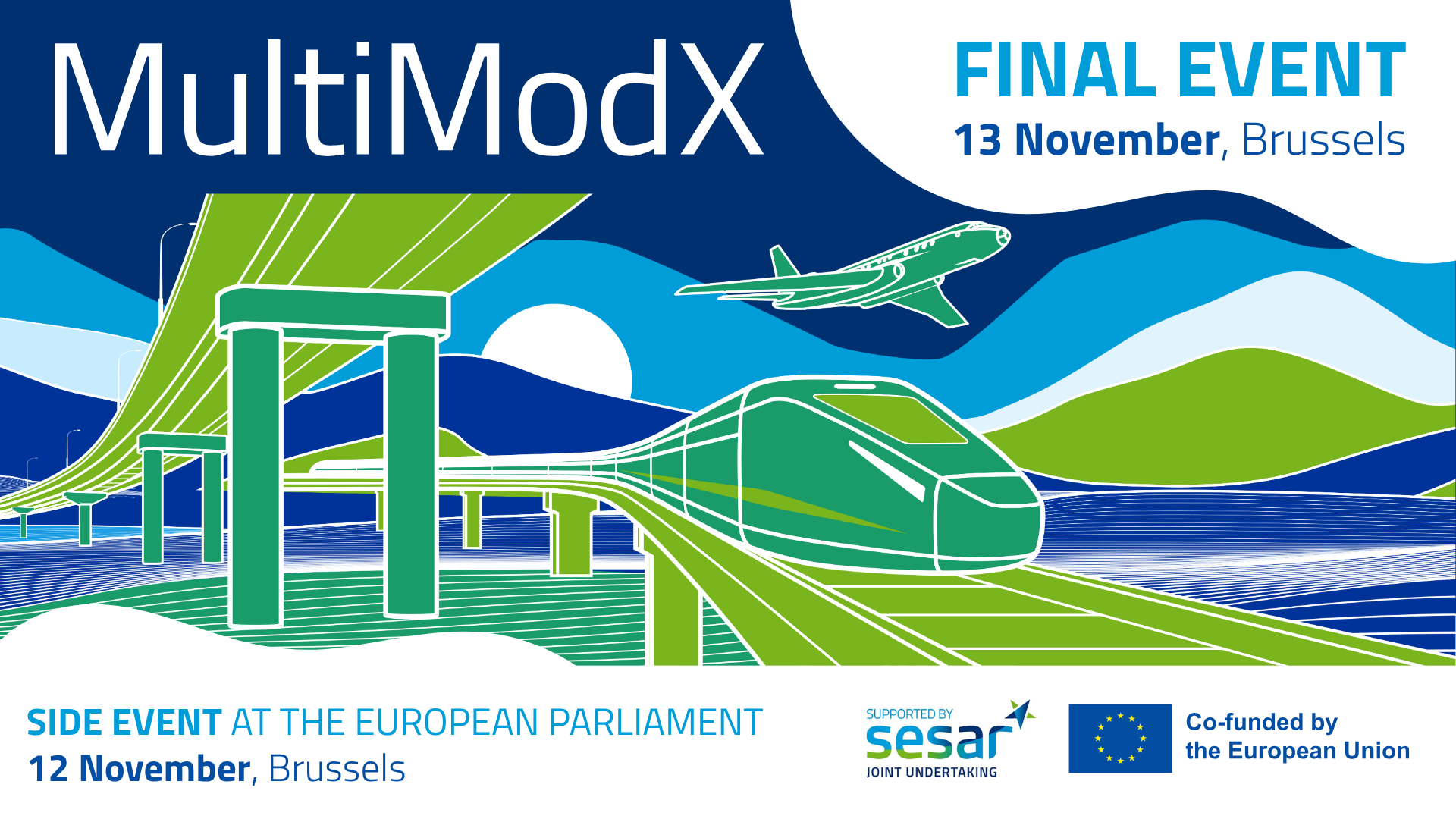MultiModX: The commitment to seamless multimodality between aviation and rail at the service of the traveler
The European project MultiModX was launched with the aim of fostering smooth integration between air and rail systems, placing the passenger at the center of mobility. To this end, it develops advanced models for timetable planning, real-time disruption management, and performance assessment frameworks focused on efficiency, resilience, and sustainability.
Funded by the SESAR 3 Joint Undertaking (SESAR JU) under the Horizon Europe program, MultiModX is part of the European innovation ecosystem for multimodal transport. In fact, the European Commission and CORDIS have highlighted it—alongside other cutting-edge projects such as JARVIS, ORCI, PRIAM, TRUSTY, and FASTNet—in their recent publication Smart airports and innovations in multimodality, underlining its role in building a smarter and more sustainable mobility system for Europe.
The MultiModX consortium brings together five leading European partners: Bauhaus Luftfahrt e.V. (coordinator, Germany), the University of Westminster (United Kingdom), Technische Universität Dresden – TUD (Germany), Nommon Solutions and Technologies (Spain), and the Union Internationale des Chemins de fer – UIC (France, International Union of Railways).
Within the consortium, Spain serves as an important testing ground through the use of scenarios based on the country’s transport system. These scenarios allow the project to validate innovative multimodal planning and management approaches under real conditions, providing insights that can later be adapted and transferred to other European contexts.

Furthermore, the Universitat Politècnica de Catalunya (UPC), in collaboration with the University of Westminster, has contributed open analytical models to estimate fuel consumption and emissions, specifically applied to Spanish air traffic. These contributions reinforce Spain’s relevance as a conceptual testbed within the project and demonstrate how rail and multimodality are essential to advancing towards low-carbon mobility. The UPC study is published in Applied Sciences (MDPI) and its models are openly available on GitHub.
MultiModX has also been presented in several leading international forums over the course of 2025. At the Air Transport Research Society (ATRS) Conference, held earlier this year, Bauhaus Luftfahrt and MultiModX researcher Ram Kamath took part in a debate on sustainability in aviation, emphasizing the need to place the passenger at the center of decarbonisation strategies. His contribution introduced an agile, data-driven approach to anticipate passenger behavior and support a smoother transition towards more sustainable multimodal journeys.
In July, at the joint Conference on Advanced Systems in Public Transport (CASPT) and TransitData 2025 held in Kyoto, Bing Liu from TU Dresden presented the results of research on integrated air–rail planning. His presentation introduced a route-based strategy designed to optimize coordination between air and rail services, illustrating how multimodal planning frameworks can deliver more resilient and efficient mobility systems.
Shortly after, at the 12th UIC World Congress on High-Speed Rail in Beijing, Luis Delgado from the University of Westminster showcased the Multimodal Journey Evaluator developed within the project. This open-source tool enables the assessment of intermodal rail–air trips in terms of door-to-door travel time, cost, and environmental footprint, while also allowing real-time simulations to measure efficiency and resilience across the transport system.
The project, which began in 2023, is now approaching its final stage. MultiModX is preparing to share its main results in November 2025 during its Final Event in Brussels, preceded by a lunch debate at the European Parliament, and also at international forums such as Rail Live, where representatives from the consortium like International Union of Railways (UIC) will join a roundtable on multimodality with other key rail-sector stakeholders.
👉 More information is available on the project’s official website and on its LinkedIn page.


